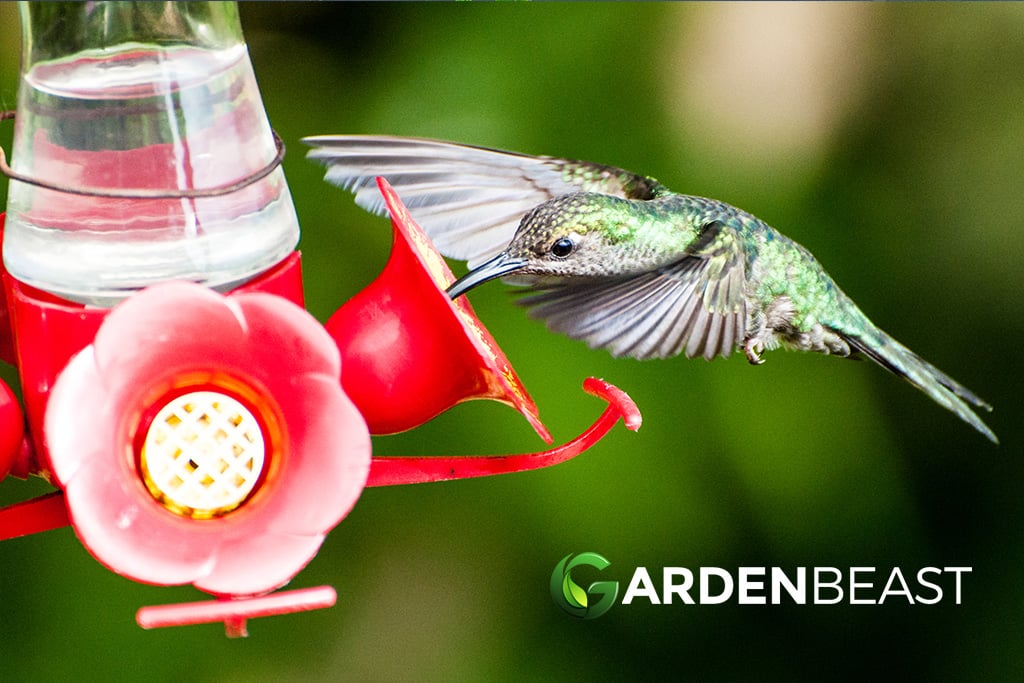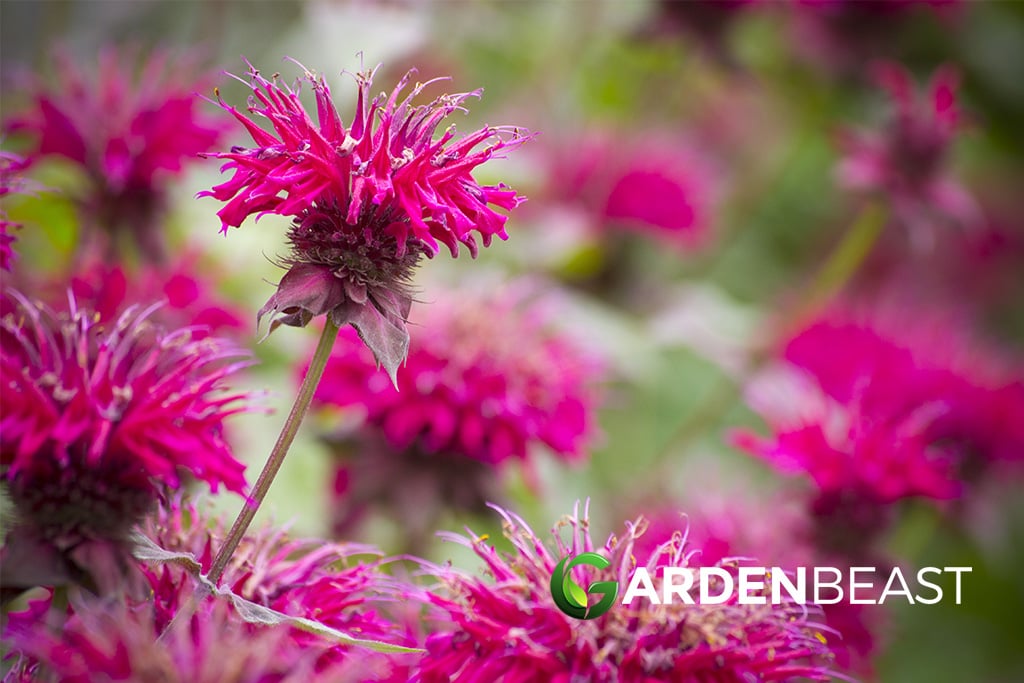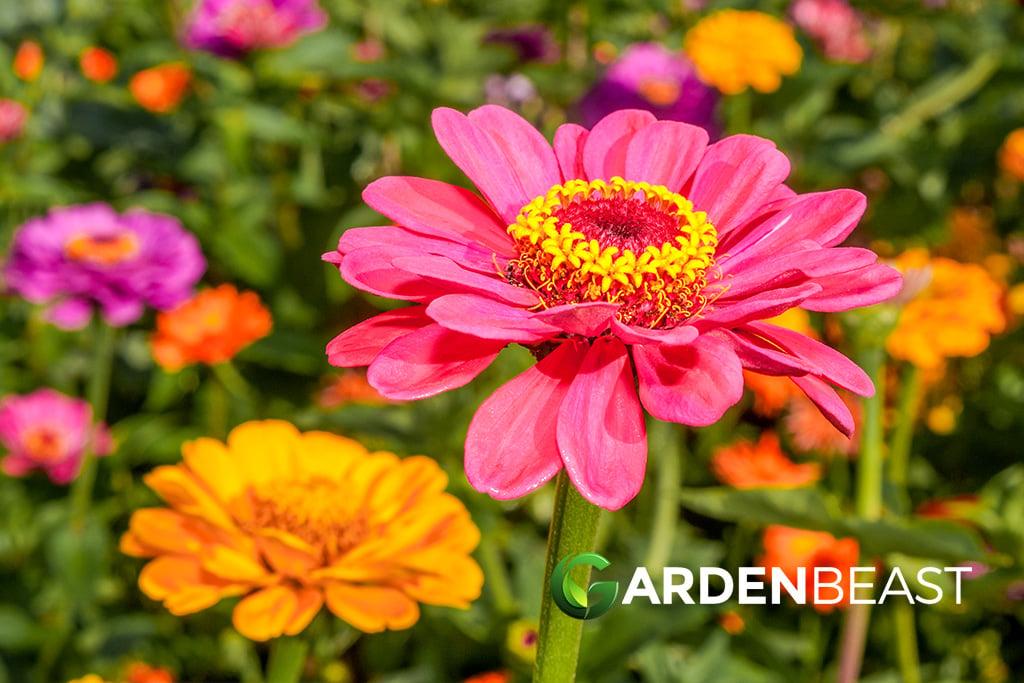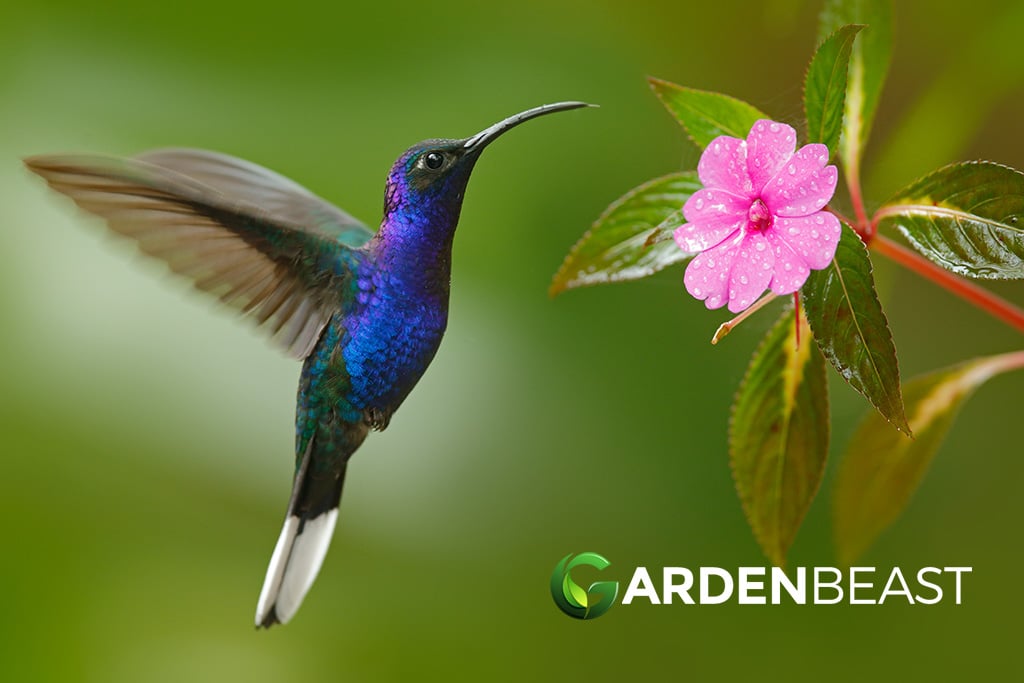Hummingbirds are great to have around. These spectacular fliers add life to any outdoor space, making it more attractive, and they also pollinate the plants in your garden. This article explores the best tips to attract hummingbirds to your yard.
Brightly colored and fascinating, hummingbirds are some of the most interesting living creatures you could want in your yard. They are not only fun to watch when they fly around during the summertime, but they are also beneficial to your plants.
Yet, attracting hummingbirds to your yard is a little bit more complex than simply hanging a nectar feeder in your outdoor space and waiting for the birds to come. Your yard must be really hummingbird-friendly for these small beauties to stick around.
Keep reading our article to find out more about hummingbirds and the best ways to attract them to your garden!
Fun Facts to Know About Hummingbirds
It’s no doubt that you’ve seen a hummingbird flying around, and you were fascinated by its bright colours and how fast it flies. You’ve likely also heard about the fact that hummingbirds are good news for gardens as they help pollinate the plants. But there is so much more to find out about these interesting flying beauties.
Here are the most jaw-dropping fun facts about hummingbirds that will help you better understand how these small birds behave and what attracts them.
- The name of hummingbirds comes from the buzzing sound that comes from their rapid-flapping wings. Each species of these tiny birds has a specific humming sound that is determined by the number of wing beats per second.
- There are 350 species of hummingbirds, and they are all native to areas of North and South America.
- Hummingbirds are the smallest migrating birds that exist. They don’t migrate in flocks like other bird species do. They migrate on their own.
- If you were to weigh a hummingbird, you’d see that it doesn’t weigh more than a nickel. That’s because these bird species are very tiny, so tiny that they can be caught by dragonflies, get snatched by frogs, or even get trapped in spider webs.
- Despite being so little, hummingbirds require a lot of “food” to survive and stay healthy. These tiny birds need to eat twice their weight in food daily. That is why you constantly see them moving from one flower to another.
- Hummingbirds eat flower nectar. Sometimes, these birds also consume small insects when they need a protein boost.
- While all other birds fly forward, hummingbirds are the only bird species that can also fly backwards. What’s more, they can also fly sideways and straight up.
- Flying is a very exhausting activity for these tiny fliers. That is why they often sit around to rest when they are not looking for food. At night, to save their energy for the next day, most species of hummingbirds go into a state of decreased physiological activity, kind of like lethargy. When this happens, their body temperature and metabolic rate decrease.
- When they reproduce, the average number of laid eggs is only two. The female hummingbirds are responsible for building the nests and for caring for the small birds. The male hummingbirds don’t take care of the young birds, and they also typically already look for another mate by the time the first brood hatches.
- Male hummingbirds have brightly coloured feathers, while female hummingbirds are typically coloured brown or dull green.
- The Ruby-throated hummingbirds, which is the most common species of these tiny fliers, has about 940 feathers on their body.

Tips To Make Your Garden Hummingbird-Friendly
Like all other pollinators, hummingbirds are good news in the garden. They help your plants by transferring pollen and so helping in the pollination process, which leads to the production of offspring for the next generation of your greens. So, it’s only natural for you to want to attract hummingbirds to your garden.
Besides being good for your plants, hummingbirds also enhance your outdoor space with their vivid colours and majestic sounds. It’s a joy to sit in your yard in the hot months and listen to these spectacular fliers.
Like all living creatures, hummingbirds have basic needs like shelter, food, and water. These are all essential things that should be part of your yard to make it hummingbird-friendly.
Here are our tips for attracting hummingbirds to your yard:
Provide them with enough food
The easiest and best way to attract hummingbirds to your garden is to provide them with enough food. As mentioned above, these tiny birds need a lot of nectar to survive, and they typically have to work a lot to get enough of it every day. So, they definitely pay attention to whether or not there are enough sources for feeding in the yard they decide to hang out.
There are different ways to provide food to hummingbirds in your garden, including with the right plants, hummingbird feeders, and insects.
Plants
Unsurprisingly, nectar-rich flowers are hummingbirds’ favourites as they provide them with their primary food choice. So, for your yard to be a perfect habitat for hummingbirds, it should include as many nectar plants as possible.
You may have heard that the colour red attracts hummingbirds. This is true. Yet, for hummingbirds, it is more critical for the plant to provide enough nectar than its colour.
We’ll discuss more on what flowers attract hummingbirds best later.
Feeders
Hummingbird feeders are a really popular method to attract these flying beauties to your yard. You can purchase commercial nectar concentrates and mixes to fill the feeders for your future flying friends.
An important thing to keep in mind is to ensure that the feeders are placed in a spot where they get sunlight in the morning and shade in the afternoon. The reason why this matters is the fact that hummingbird nectar can go bad really quickly if it sits in the sunlight all day.
Another essential aspect to consider is to place the feeders close to a bush where hummingbirds visiting your garden can hide. If you place the feeder in an exposed area, the hummingbirds may feel too vulnerable, and they might leave your yard for this reason.
Don’t forget to clean the feeders regularly in order to prevent insects from monopolizing the nectar.

Insects
While hummingbirds love nectar, they also prefer eating various insects for a balanced diet. Insects represent the protein source in hummingbirds’ diets. And, these tiny beauties are particularly looking for sources of protein in the nesting season for proper growth.
To ensure that besides nectar, hummingbirds will also find enough insects in your yard, avoid using pesticides or insecticides. These toxic substances kill off all insects that can be food sources for the hummingbirds that decide to visit you.
The best way to provide hummingbirds with both nectar and insects, choose to plant flowers that are also attractive to various insects. The more food sources hummingbirds find when they visit your yard, the longer they’ll stick around.
Provide water sources
Besides food, hummingbirds are also very attracted to water, particularly interesting water features like sprinklers, fountains, waterfalls, or drippers.
The traditional birdbaths aren’t that attractive to hummingbirds. But if you already have some birdbaths in your yard, you may see a few tiny beauties resting on the rim of those water sources.
Ensure that the water sources in your yard provide clean and fresh water. Also, place them close to the nectar feeders or nectar-rich flowers to make it even more convenient for hummingbirds to eat and drink in your garden.
Prepare some nesting spots
Hummingbirds need to rest a lot because flying really exhausts them. When they aren’t looking for food sources, hummingbirds prefer to find a sheltered place where they can relax and recover. Install slender poles, clotheslines, or even wires where these tiny birds can sit while catching their breath.
Besides places for rest, you should also provide hummingbirds with the right places to build a nest. Keep in mind that hummingbirds don’t use birdhouses or nesting boxes as other bird species do.
These tiny beauties will want to have a safe and hidden place where they can build their own nest. For making their nests, hummingbirds prefer trees and shrubs.
6 Plants That Attract Hummingbirds
Nectar is hummingbirds’ main and preferred food as it supplies fast energy and makes up about 90% of these birds’ diet. And, where better place for them to get enough nectar to eat daily than from your garden plants?
In general, the best habitats for these tiny birds are those gardens where flowers bloom at different times during spring and summer. This way, hummingbirds always have an available food source, no matter the time of the year they choose to visit an outdoor space.
What’s more, it’s also recommended to choose native plants for your garden. Keep in mind that hummingbirds also prefer yards with shrubs to have a safe place for building a nest.
There are some plants that are particularly attractive to hummingbirds. These flowers will also attract butterflies and other pollinators to your outdoor space.
1. Bee balm
Bee Balm flowers’ shape and bright colours are really attractive to hummingbirds, butterflies, and other pollinators.
Bee Balm starts blooming in July and continues until the end of the hot season. It prefers to be grown in full sun but can also adapt to partial shade.

Bee Balm flowers come in various colours, including red, purple, and orange. All these bright colours act like magnets to hummingbirds.
2. Zinnia
Zinnia flowers are extremely common and easy to grow, and hummingbirds and other pollinators love them. They come in all colours imaginable, except blue and brown, but the most common ones are coloured in orange and pink.

Zinnia flowers are a great nectar source for hummingbirds. After they mature, they become a great seed source for seed-loving bird species.
These brightly-coloured flowers bloom starting in late spring until the first frost in the fall. They prefer to be kept in full sun and moist but well-drained soil.
3. Salvia
Part of the mint family, Salvia flowers are also magnets to hummingbirds. They feature tall spikes of small, purple-pink flowers that are a great nectar source for hummingbirds and other pollinators. The blooming season for this flower starts in mid-summer and lasts until late summer.
Salvia is really easy to care for, requiring only a lot of sunlight and well-drained soil to grow and bloom.
4. Bleeding Heart
As the name suggests, this flower features pink or white heart-shaped blooms and very attractive foliage. It blooms every spring, attracting hummingbirds and other pollinators to the outdoor space with its nectar-filled flowers.
Bleeding Heart flower prefers to be kept in shady spots and moist but well-draining soil. The quicker it gets warmer outside, the quicker this flower loses its blooms.
5. Butterfly Bush
The Butterfly Bush shrub is a magnet to butterflies. But this plant is also attractive to hummingbirds. The Butterfly Bush is attractive to hummingbirds and other bird species for two reasons: it provides nectar and excellent shelter.
It features thick, elongated clusters of pink, purple, or blue flowers that appear every year during the hot season. It is a drought-resistant shrub that prefers to be grown in full sun and well-drained soil.
6. Trumpet Creeper
Also commonly known as Trumpet Vine, this plant is a perfect choice to attract hummingbirds to your yard. Besides offering nectar to the tiny fliers, it also provides shelter thanks to its dense foliage.
In summer, the blooms of Trumpet Creeper come in colours like orange, red, and yellow, which makes them even more attractive to hummingbirds. It prefers to be grown in full sun but can also adapt to partial shade. Provide well-draining soil.
In Conclusion
Having hummingbirds in your garden is an absolute joy as the weather starts to get warmer and you start spending more time outdoors. These tiny flying beauties will fill your outdoor space with life, fascinating chirping, and bright colours.
All you have to do to attract them to spend time in your yard is to fulfil their most basic needs: food, water, and shelter.
Are hummingbirds already present in your garden? Share your experience in the comments below!
